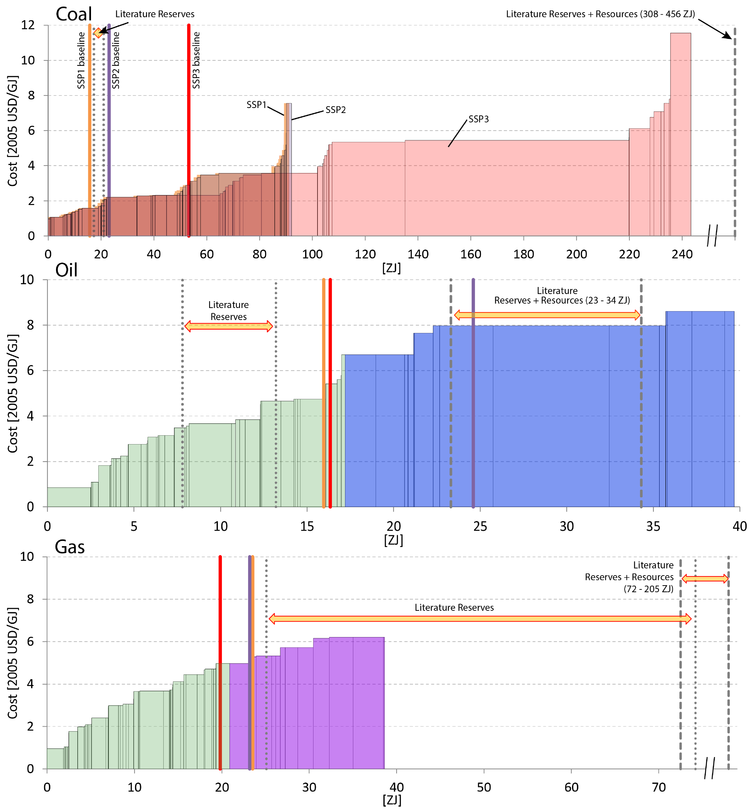Uranium and other fissile resources - MESSAGE-GLOBIOM
| Corresponding documentation | |
|---|---|
| Previous versions | |
| Model information | |
| Model link | |
| Institution | International Institute for Applied Systems Analysis (IIASA), Austria, http://data.ene.iiasa.ac.at. |
| Solution concept | General equilibrium (closed economy) |
| Solution method | Optimization |
| Anticipation | |
Nuclear Resources
Estimates of available uranium resources in the literature vary considerably, which could become relevant if advanced nuclear fuel cycles (e.g., the plutonium cycle including fast breeder reactors, the thorium cycle) are not available. In MESSAGE advanced nuclear cycles such as the plutonium cycle and nuclear fuel reprocessing are in principle represented, but their availability varies following the scenario narrative. <xr id="fig:MESSAGE-GLOBIOM_uran"/> below shows the levels of uranium resources assumed available in MESSAGE scenarios, building upon the Global Energy Assessment scenarios (see Riahi et al., 2012 MSG-GLB_riahi_chapter_2012). These span a considerable range of the estimates in the literature, but at the same time none of them fall at the extreme ends of the spectrum (see Rogner et al., 2012 MSG-GLB_rogner_chapter_2012, Section 7.5.2 for a more detailed discussion of uranium resources). Nuclear resources and fuel cycle are modeled at the global level.
<figure id="fig:MESSAGE-GLOBIOM_uran">
</figure>
<xr id="fig:MESSAGE-GLOBIOM_uran"/> presents the global uranium resources in the MESSAGE interpretation of the SSPs compared to seven supply curves from a literature review (Schneider and Sailor, 2008 MSG-GLB_schneider_long-term_2008). Conservative Crustal and Optimistic Crustal refer to simple crustal models of uranium distribution in the crust and the of extraction costs on the concentration. Pure-KCR refers to a fit of a simple crustal model to known conventional resources (KCR) as estimated by the Red Book 2003 (OECD/NEA 2004 MSG-GLB_oecd_uranium_2003). PPM-Cost over the simple crustal models include a relationship between uranium grade and extraction costs. FCCCG(1) and (2) as well as DANESS refer to estimates from more complicated models of the dependency of extraction costs on uranium concentration (and therefore resource grade).
